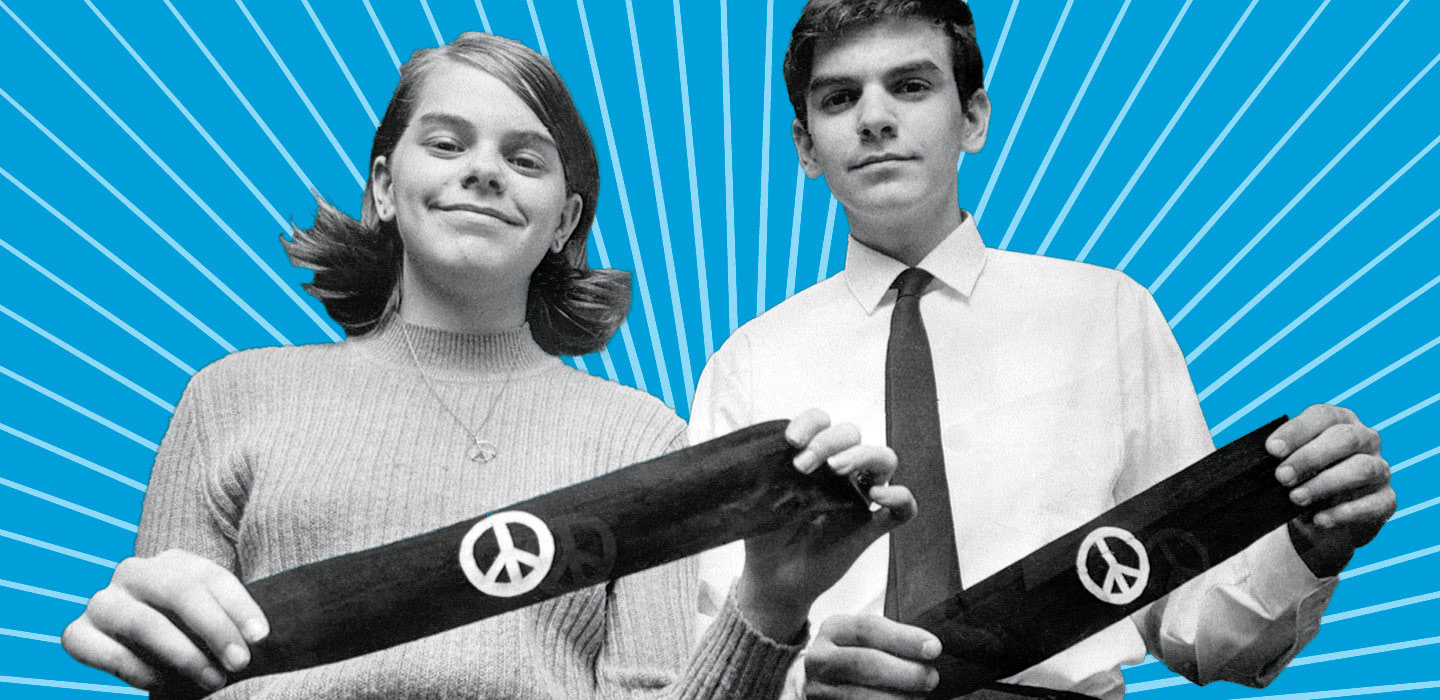Mary Beth Tinker had never felt so nervous. As she got ready for school on a snowy winter morning, the quiet straight-A student knew she was about to do something that could get her into serious trouble.
But the 13-year-old believed she had no other choice. It was 1965, and U.S. troops were fighting in the Vietnam War (see “You Might Need to Know . . .” below).
“All the time, we were seeing on the news: war, war, war,” says Mary Beth, now 67. “The bombings, the kids running from their huts screaming—it seemed like everything was on fire.”
The more Mary Beth learned about the war in the Southeast Asian country, the more she wanted to protest it. So on December 16, 1965, she walked into her junior high in Des Moines, Iowa, wearing a black armband with a peace sign on it. Mary Beth meant the armband to be a symbol of mourning for both the Americans and the Vietnamese who had been killed in the war.
That didn’t go over well with the principal. He said Mary Beth had disrupted other students by wearing the armband—and suspended her.
The Tinker family believed the suspension violated Mary Beth’s First Amendment right to free speech and sued the school district. Eventually, the case made it to the U.S. Supreme Court.
In 1969, the Court ruled 7-2 in favor of the Tinkers. The justices stated that students and teachers don’t “shed their constitutional rights to freedom of speech or expression at the schoolhouse gate.”
Fifty years later, the case—Tinker v. Des Moines—remains one of the most important in U.S. history. It established that public school students can voice their opinions.
Or as Mary Beth puts it today: “Young people can speak up about the things that affect their lives.”















